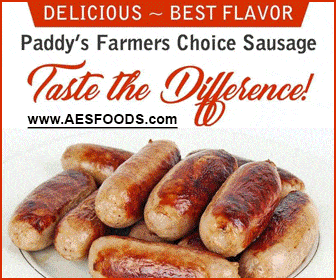
How Luo traditions will shape the funerals of Ken Okoth and Laboso: Following the deaths of Bomet Governor Dr Joyce Laboso and Kibra Member of Parliament Ken Okoth, the talk in town is about their funerals.Laboso died of cancer on Monday at Nairobi Hospital. She previously served as the Sotik MP before she contested for the Bomet governorship which she won in 2017.
Not many Kenyans knew that Laboso was married to Dr Edwin Abonyo. In an exclusive TV interview in 2015, Laboso told KTN News reporter Sophia Wanuna that she met her husband during her days as her teacher at Kipsigis Girls School. Abonyo was then a tea plantation manager. Laboso will be buried at their Fort Ternan home in Kisumu County on Saturday, August 3.
Ken Okoth
The Kibra MP lost the battle to colorectal cancer on Friday last week also at the Nairobi Hospital.Now a court has temporarily stopped his internment in an application by a Nairobi Nominated MCA Anne Muthoni Thumbi who avers she has a child by the late MP; that Okoth’s family was locking her out of burial arrangements while preferring cremation to destroy any evidence proving the paternity of the child.
Following his death, there was uncertainty on whether Okoth would be cremated or buried.Early this week, his paternal side of the family protested it been sidelined in the burial plans.“Let it come out clearly that we are not piling pressure to be given Okoth’s body to bury. But if there is nowhere he can be buried.
Let the body be given to us so that we bury him next to the grave of his father,” said Raymond Mbai, the family spokesman.It is still not clear if Okoth will be buried at his late father’s home in Kochia, Rangwe Constituency or at his maternal family home in Kasewe, Kabondo Kasipul, Homa Bay County.
Before the court order was issued, the plan, according to ODM leader Raila Odinga, was to have a funeral service at Got Rateng Secondary School in Homa Bay on Saturday and hand over the body to the family for whatever method of disposal it would deem fit.The deaths of Laboso and Okoth have once again started conversations about the traditional burial rites in African culture – specifically among the Luo.
According to Luo elders we talked to, funeral traditions are universal and binding to every member of the community.“I am not privy to their (Laboso and Okoth) burial arrangements, but there are laid down procedures which are universal and binding to everyone,” says 70-year-old Mzee Justus Oliech, a Luo elder from Nyakach, Kisumu County.
How the Luo bury a married woman
In Laboso’ case, Oliech says traditionally in the Luo culture, a married woman should spend her last night on earth in her husband’s house. This means the body of the Bomet governor must be taken to her Kisumu home a day before she is buried.Luo tradition, he said, dictates that a wife must be buried on the left side of the house with her head facing the main gate.The grave must be dug a night before the burial day mainly by young men who are served with beer and roasted meat.
The food and drinks are served at the graveside.On the burial day, a married woman’s body is moved out of the house at 8 am and placed on the left side of the structure.It is also the same side where she is buried.“The body must be taken out for viewing on the burial day at 8 am and placed on the left side of the house, that is what our custom says,” adds Oliech.
Unmarried woman treated as an outsider
For an unmarried woman (Migogo), things are different. She is treated like an outsider and buried at the gate.Modern Luo women have challenged this kind of burial. They say it has forced many young girls to go for early marriages to secure burial places because no one wants to be buried outside the homestead like a stranger.“It is a tradition that has brought a lot of debate with women feeling it subjects them to harsh treatment, says Oliech, adding that the traditions were passed on to them from ancestors and are not supposed to be questioned.
Married man
As for a married man who lives in his home, Luo customs demand that his body to be removed outside his house at night, mostly after his grave has been dug.The body is then placed on the right side of the house. Close relatives and other members of the public are then allowed to view it until some minutes to the burial time when the coffin is permanently sealed.He is buried on the right side of the house with his head facing the main gate.“The right side means power,” Oliech adds.An unmarried man is buried next to his mother’s house. This also applies to married men who are yet to build their own homes and are still living in their fathers’ homesteads.
Burial rites
The remains of a woman should be interred at noon or some minutes past midday, 10 hours after her grave was dug. During a woman’s burial, it is her husband who drops the first soil into the grave (on the coffin) before others can join.For a married man, the remains must be interred at 4 pm. His father is the first to drop soil on the remains. But in cases where the man’s parents died before him, the widow who drops the first soil before other relatives can join.
Green twigs or flowers are then planted on the grave to indicate that man is like a flower which will eventually dry up.According to Mzee Oliech, the twigs or flowers symbolise the life of a human being. The twigs and flowers placed on the grave are never watered – this is symbolic. They wilt away and dry just like the life of a human being.
After the funeral
After the burial, family members of the deceased must stay in the home for three days before they can disperse. Traditionally, an animal is slaughtered and elders invited for a house-sweeping ritual at the end of the three-day mourning period.In Christian families, the house-sweeping ritual is presided over by invited church leaders who pray for the family members and the departed soul.
“Things have been adjusted a little to accommodate religion. I now see church leaders being invited to oversee the ritual,” Mzee Oliech says.In Luo culture, the widow or widower must wait until after the burial when he or she is ‘set free’ to marry or be married.According to 95-year-old Mzee Samwel Okech from Homa Bay, who is adept in matters culture and customs, ‘setting free’ is in form of a dream where the deceased appears to the widow or widower and the two have fun in the dream.
According to Mzee Okech the deceased can take weeks or months to appear in a dream – depending on the state of the relationship before the death.“If it (the dream) occurred a short period after the death, it would is interpreted to mean you were in good terms with the deceased and the widow or widower will begin looking around for a new partner,” says Mzee Okech.Once her late husband appears to her in a dream, a woman is expected to go back to her parents’ home and spend a day there before returning to her husband’s home.Thereafter, she is free to mingle with any interested man.
By Mireri Junior
Source- standardmedia.co.ke
How Luo traditions will shape the funerals of Ken Okoth and Laboso







